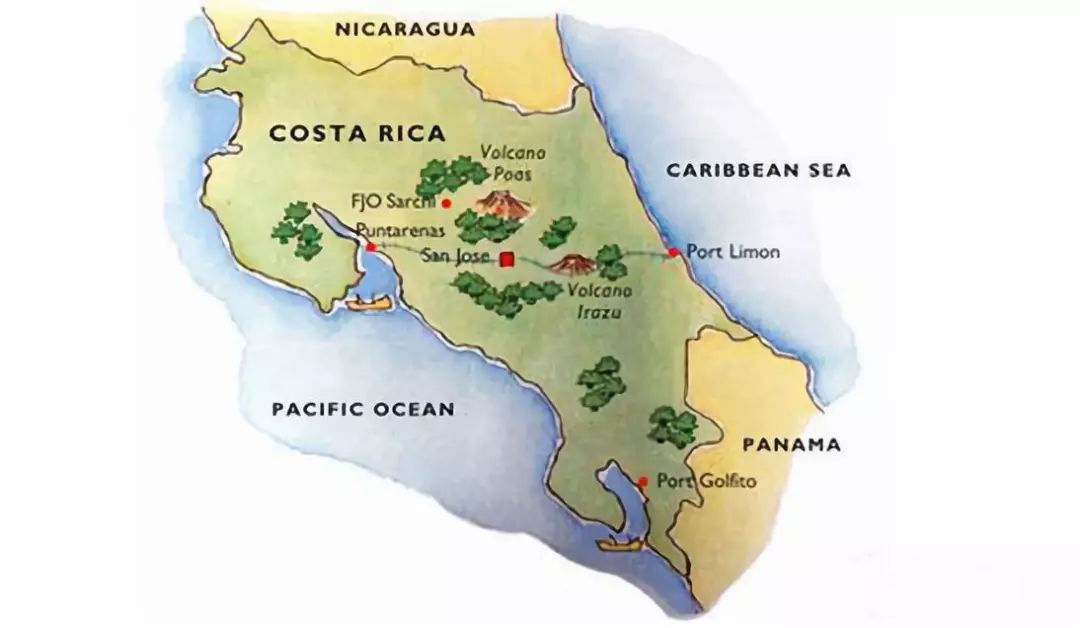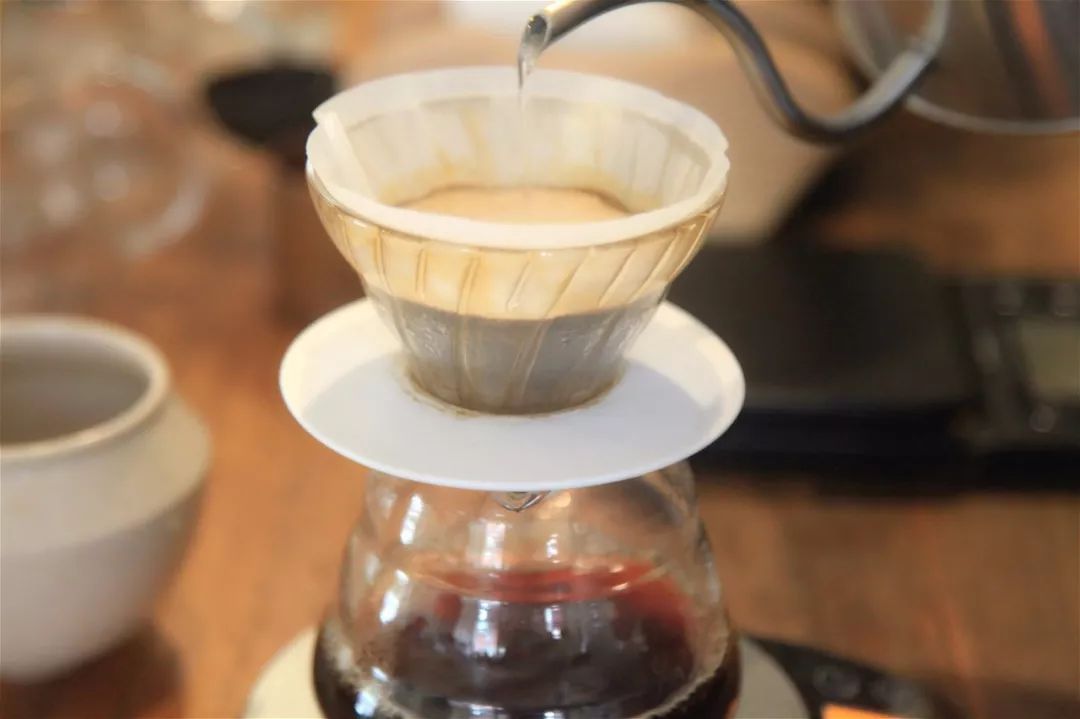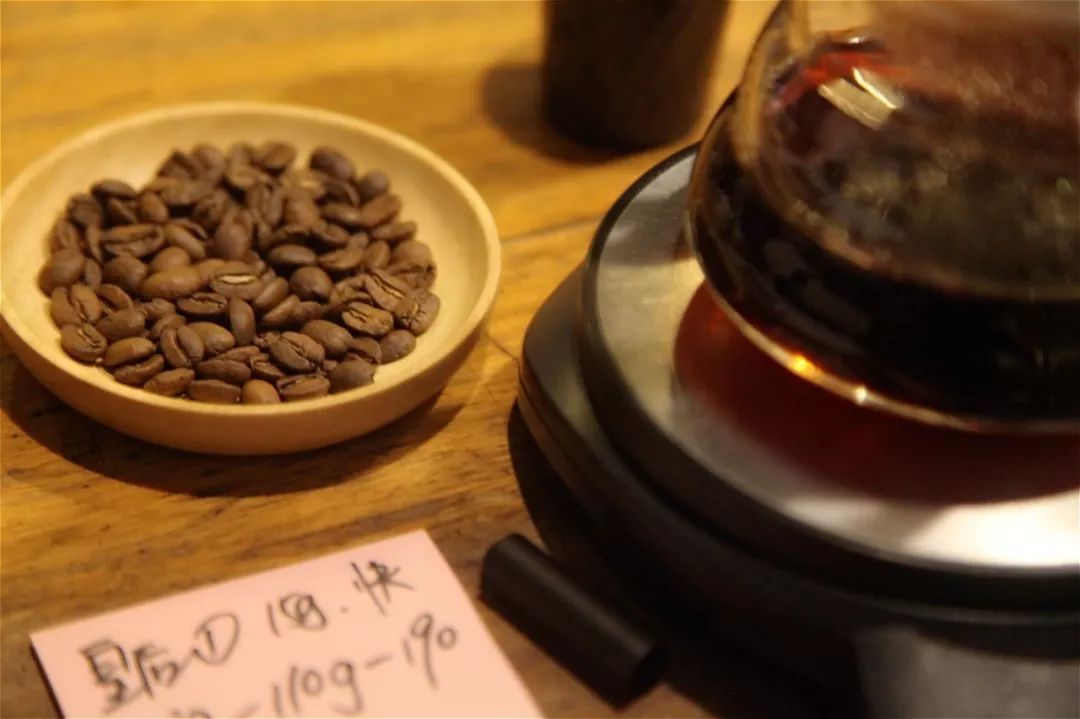Costa Rica-what is red wine tanning?
Professional coffee knowledge exchange more coffee bean information please follow the coffee workshop (Wechat official account cafe_style)
Costa Rica Tempranillo
Costa Rican red wine fermented in the sun
Producing area: Western valley producing area
Processing plant: Arquetley Brothers processing Plant
Soil: volcanic soil
Altitude: 1600 m-1700 m
Variety: Kaddura, Kaduai
Treatment: red wine sun fermentation
| 01 | production area profile |
Arquetley Brothers processing Plant
Costa Rica is located in the Central American isthmus, and is simultaneously regulated by Pacific and Atlantic currents and sea breezes. There are many towering volcanoes up to 2000 meters above sea level in Costa Rica. Coffee berries grow slowly in the fertile volcanic ash soil and cool environment at high altitude, giving birth to coffee beans with complete and rich flavor. The first place in Costa Rica to grow coffee was on the slopes of the Poas and Barva volcanoes, today known as the Central Valley (Central Valley). After years of development, there are now seven major coffee-growing areas, with soil consisting of successive layers of volcanic ash and dust.

Planting history
When Don Edgar Don Edgar Aguilera built Costa Rica's first coffee factories 70 years ago, he had no idea that his children would start a project to give their coffee a place in different parts of the world. Since 2007, when the prices set by the fresh coffee market were very low, the Aguilet brothers decided to sell the coffee at a better price, so they began to set up a micro-processing plant. They started processing fresh coffee fruit from 200 Fanega, a unit of land survey in Central America, and now they can handle fresh coffee fruit from 1500 Farneg. Now, 12 Aguilet brothers work hard every year to improve the quality of the coffee they produce.
The Aguilet brothers usually manage the family's six farms and micro-processing plants and recruit pickers to help during the busy harvest season. After inheriting the farm from their parents, the brothers are now integrating the third generation into the family business.
Main varieties
The main variety is Kaddura, a single gene variety of Bourbon bourbon, which was found in Brazil in 1937. Its production capacity and disease resistance are better than bourbon, and the tree is shorter and easier to harvest. Unfortunately, like bourbon, it has the periodic problem of production capacity fluctuation every two years. But its flavor is comparable to or slightly worse than bourbon beans, more importantly, super adaptability, no shade trees, direct exposure to the sun can also be full of vitality, commonly known as exposed coffee (Sun Coffee), can adapt to high-density planting, but must apply more fertilizer to increase the cost, so the acceptance of coffee farmers is not high in the initial stage. Suitable for planting in the high altitude area from 700m to 1700 m, the altitude adaptability is very strong, but the higher the altitude, the better the flavor, and the production capacity is relatively reduced.
02 | processing method
1. First, put the peeled berries in a stainless steel container. The use of stainless steel containers makes the coffee more clean.
2. Put the container of raw beans indoors, and the indoor temperature will be strictly controlled, for temperature control, and temperature for coffee treatment.
After moving to the indoor area where the temperature is controlled, the next step is to seal the container.
4, after full injection of carbon dioxide, in the absence of oxygen, it will slow down the decomposition rate of pectin, sugar in mucus, and PH value will decrease more slowly, which means that there will be less glycolic acid. Under the condition of 22 ℃, the dry body can be fermented for 3 days without the taste of dryness and acetic acid, and the fermentation time will be longer at lower temperatures.
Finally, take it out and dry it.

03 | Analysis of raw beans
[Costa Rican red wine fermented in the sun] is Kaddura, with strong fermented red wine aromas, soft raspberry acid, nuts, roasted hazelnuts, floral and cool aftertaste, and more obvious red wine flavor at room temperature, like drinking ginseng tea.


04 | Baking analysis
This coffee has a round raw bean, yellowish green, good evenness and low moisture content. The goal of baking is medium baking, which retains soft acidity on the one hand and shows multi-level red wine fermentation and nutty aromas on the other.
In the first batch of baking, the lower bean temperature is relatively high, the bean temperature is 200 degrees, and the firepower is also relatively high. In the process of baking, it was found that the bean was high above sea level and hard, and the baking method of lengthening dehydration, gradually lowering the fire and climbing steadily was adopted, and the firepower was adjusted before the bean entered the yellow point, dehydration and explosion to avoid burning. and choose to come out in 2 minutes and 50 seconds after the end of the explosion to prolong the caramelization reaction time and retain more flower aroma, alcohol thickness and wine aftertaste.

Yangjia 600g semi-straight fire
Enter the pot at 200 degrees Celsius, adjust the firepower to 160 degrees after opening the throttle for 30s, keep the throttle unchanged, the temperature return point is 1 "36, keep the firepower, the bean watch turns yellow in 5: 10" seconds, the smell of grass disappears completely, enter the dehydration stage, the firepower is reduced to 130 degrees, and the throttle is adjusted to 4.
8'25 "dehydration completed, firepower reduced to 60 degrees, 8pm 39. At 30 ", ugly wrinkles and black markings appear on the bean surface, and the smell of toast obviously changes to the smell of coffee, which can be defined as a prelude to an explosion. At this time, listen carefully to the sound of the explosion point, start to explode at 8: 39", adjust the firepower to 40 degrees, adjust the throttle to 5 (the firepower should be very careful, not so small as to be free of bursting sound), develop 2o05 "after an explosion, and put it into the pot at 196 degrees.

Glass test flavor: red wine, berries, hazelnuts, chocolate

05? cooking analysis
Recommended cooking method: hand flushing
Degree of grinding: (Japanese little Fuji R440) 3.5
V60 filter cup, 15g powder, water temperature 90-91 degrees, grinding 3.5.The ratio of water to powder is close to 1:15.
26 grams of water is steamed for 30s
Section: the first stage of water injection uses a small flow, the central circle, vertical water injection to 125g cut off; the second stage water injection with a small flow, more around the outer circle, slow water injection to 225g
That is, 26-125-225g
Bean grinder
Grinding degree
Powder quantity
Filter cup
BG
4z
15g
V60
Water temperature
Stuffy steam
The second stage of water quantity
The third stage of water quantity
Total time 2:04
90-91 degrees
26g water steaming for 30s
99g
100g
Total water volume: 225g
Sweetness: ☆☆
Acidity: ☆☆
Bitterness: ☆
Other suggestions for trickling extraction:
Normal pressure, recommended grinding degree of 3.5-4, water temperature 90 °C
Philharmonic pressure, recommended 2.5 grinding degree, water temperature 90 °C
Important Notice :
前街咖啡 FrontStreet Coffee has moved to new addredd:
FrontStreet Coffee Address: 315,Donghua East Road,GuangZhou
Tel:020 38364473
- Prev

Does the water temperature of hand-brewing coffee matter? -"almost" is actually a long way off!
Professional coffee knowledge exchange more coffee bean information Please pay attention to the coffee workshop (Wechat official account cafe_style) there are often some questions when brewing by hand: why does the coffee I brew have different flavor beans each time? In fact, most of the time, we do not pay attention to the parameter of water temperature, and the water begins to boil in about the same time as boiling. First of all, to have a very important concept, that is
- Next

Daily cooking | what is one-size-fits-all flow? What is the three-knife stream? The difference between one-knife flow and three-knife flow
Professional coffee knowledge exchange more coffee bean information Please pay attention to the coffee workshop (Wechat official account cafe_style) the difference between one-size-fits-all and three-knife flow simply, one-size-fits-all flow: after steaming, only one continuous injection of water is done: after steaming, put a section of water into three stages. What is the situation of using one-knife flow or three-knife flow? Personal experience: look at altitude: sea
Related
- What is the meaning of lactic acid fermentation with coffee bean treatment?
- How to judge the state of foam by sound?
- How does the latte pull out the unicorn pattern? Come to get for a little trick to improve the flower pull!
- Will flower pulling affect the taste of the latte?
- Do you know the history of coffee?
- The difference between honey treatment and sun washing what is raisin honey treatment?
- What kind of milk can a novice use to make coffee foam to keep the foam longer? The correct method and skills of milking tutorial sharing
- Why do washed coffee beans taste sour? Flavor characteristics of washed Coffee
- Introduction to the skill of how to practice the size and height of water injection around the circle of hand-brewed coffee
- How do beginners practice coffee flower drawing from scratch?

